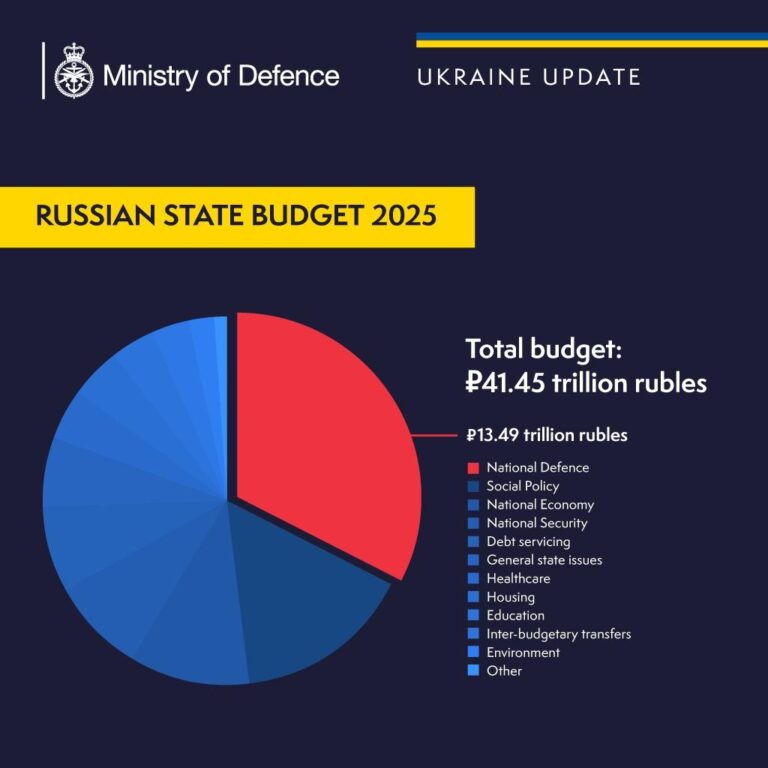Russia is preparing to revise its 2025 budget amid declining energy revenues and a widening fiscal deficit, The Moscow Times reports. The government’s planned adjustments reflect mounting challenges for the country’s economy, heavily reliant on oil and gas exports. With global energy prices remaining volatile and demand slowing, Moscow faces increasing pressure to rebalance its finances and recalibrate spending priorities ahead of next year.
Russia Faces Budget Shortfall Amid Declining Energy Revenues
Russia is confronting a significant financial challenge as its 2025 budget projections are being revised downward due to shrinking energy revenues. The country’s heavy dependence on oil and gas exports, which constitute a substantial portion of federal income, has become a vulnerability amid global price fluctuations and reduced demand from key trading partners. This shortfall threatens to widen the fiscal deficit, forcing government officials to explore either increased borrowing or spending cuts to maintain economic stability.
Key factors influencing the budget revision include:
- Lower global energy prices: Persistent volatility in oil and gas markets has reduced export earnings.
- Declining production volumes: Sanctions and logistical constraints have impacted output levels.
- Rising expenditures: Increased social spending and military outlays are pressuring the budget further.
| 2025 Budget Item | Previous Estimate (USD bn) | Revised Estimate (USD bn) |
|---|---|---|
| Energy Revenues | 220 | 180 |
| Fiscal Deficit | 30 | 55 |
| Public Spending | 400 | 410 |
Government Plans Increased Borrowing to Cover Wider Deficit
Facing a significant shortfall in energy revenue projections, the Kremlin has outlined aggressive measures to bolster fiscal resources through increased borrowing. Officials are reportedly preparing to issue more sovereign debt both domestically and internationally, aiming to cover the widening budget gap fueled by lower oil and gas export income. This shift marks a notable departure from previous years when Russia had pursued cautious borrowing to maintain economic stability amid Western sanctions and volatile global markets.
Key details of the borrowing strategy include:
- Expansion of domestic bond issuance: Targeted to appeal to Russian institutional investors to reduce currency risk.
- International market penetration: Selective use of foreign currency debt despite geopolitical tensions to diversify funding sources.
- Increased reliance on short-term debt instruments: To maintain liquidity without overly burdening long-term fiscal commitments.
| Borrowing Instrument | Planned Volume (billion RUB) | Maturity |
|---|---|---|
| OFZ (Domestic Bonds) | 1,200 | 3-10 years |
| Eurobonds | 350 | 5-7 years |
| Short-term T-bills | 800 | Under 1 year |
Experts Urge Diversification of Economy to Stabilize Fiscal Future
Economic analysts and policymakers are increasingly advocating for a strategic pivot in Russia’s fiscal planning, emphasizing the necessity to reduce dependency on volatile energy revenues. With global energy prices showing persistent unpredictability, experts warn that overreliance on oil and gas exports heightens Russia’s vulnerability to external shocks. Instead, they are calling for targeted investments in sectors such as technology, manufacturing, and agriculture to create a more balanced and sustainable economic structure.
Key diversification priorities highlighted include:
- Developing renewable energy initiatives to complement traditional energy sources
- Expanding digital infrastructure and innovation-driven enterprises
- Enhancing export potential of non-energy goods through trade partnerships
- Promoting small and medium-sized enterprises (SMEs) in domestic and international markets
| Sector | Projected Growth by 2025 | Current Contribution to GDP |
|---|---|---|
| Technology | 12% | 5% |
| Agriculture | 8% | 4% |
| Manufacturing | 10% | 15% |
Key Takeaways
As Russia confronts the dual challenges of declining energy revenues and an expanding budget deficit, the government’s move to revise the 2025 budget signals a strategic shift in economic planning amid mounting pressures. How these adjustments will impact domestic priorities and Russia’s broader fiscal stability remains closely watched by both analysts and international observers in the months ahead.




